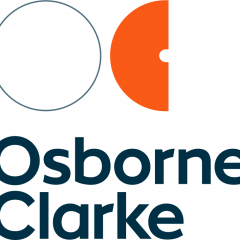Who: Heineken UK Ltd (t/a Kronenbourg) and Beverage Brands UK Ltd (t/a WKD) , and the Advertising Standards Authority (“ASA”)
Where: UK
When: 2 November 2016
Law stated as at: 15 December 2016
What happened:
Complaints were raised by the Youth Alcohol Advertising Council (YAAC) in relation to two separate ads for alcohol products this month, relating to the perceived effects of alcohol and inappropriate ad content designed to target under-18s. The ASA did not uphold any of the complaints in relation to either of the ads.
Kronenbourg
Kronenbourg ran a YouTube campaign featuring Eric Cantona who, with two dogs, both wearing barrels containing Kronenbourg around their necks, delivered Kronenbourg to “the deserving“. The ‘deserving’ being people who had experienced unfortunate mishaps or who had enjoyed improbable success. The ‘deserving’ included: a monk who had been caught in the ropes of his church’s bells; a postman who had fallen off his bike and was trapped in the snow; and an actor whose dramatic performance received a standing ovation. After each of the subjects had escaped their situation or, for the actor, finished his performance, they were either presented with, or seen drinking, a pint of Kronenbourg. The final scene included the closing statement: “Man’s best friend delivering one of man’s greatest achievements. A taste suprême”.
The complaint raised in relation to the Kronenbourg ad by YAAC was that the ad implied alcohol: (i) could enhance confidence; and (ii) had therapeutic qualities, and was capable of changing mood, physical condition or behaviour.
Confidence: This related to a scene with an actor, who received a standing ovation from the audience for his performance of a dramatic suicide scene. However, the actor was praised by the audience after finishing his performance but before he received the beer. The ASA therefore concluded that this part of the ad did not breach the code, as it did not make any implication that it was the Kronenbourg that had given the actor confidence in the later part of his performance, or that it had enhanced his popularity with the audience.
Therapeutic qualities; capable of changing mood, physical condition or behaviour: This issue related to both the scene with the postman and to the scene with the monk. The monk was seen smiling as he brought the glass to his mouth and closed his eyes as he took a sip of the beer. The postman was seen shivering as he brought the pint glass to his mouth and, after taking a sip, he waved to Eric Cantona as a gesture of gratitude.
The ASA’s determination was that, although these situations showed the characters as appearing pleased, the situations portrayed implied that any improvement in their mood was due to their relief at having been rescued from unpleasant situations, coupled with their gratitude at having received an unexpected gift of a free beer. Therefore the complaints in relation to these elements of the ad were not upheld, as the ASA considered that, because the beer was consumed at the very end of the scenes after the rescues had taken place, there was no suggestion that it was the consumption of the beer, rather than the act of being rescued, that had improved their mood.
WKD
WKD’s social media ad contained a post on the @WKDOfficial Twitter feed, stating: “Our WKD tech team are trying to make your emoji dreams a reality.” Below the post was an image of a phone screen showing an exchange of messages. The message exchange ran as follows: “Gonna be a gr8 nite” and included an image of three small blue bottles. The response included an image of two small red bottles and a ‘face with tears of joy’ emoji.
The complaint in relation to this ad was that emojis were likely to appeal particularly to people under the age of 18 contrary to the CAP Code, which states that alcohol ads must not be likely to appeal particularly to people under 18, especially by reflecting or being associated with youth culture. However, the ASA determined that emojis were likely to have appeal across many age groups and, therefore, not likely to appeal particularly to people under the age of 18. The complaint was not upheld by the ASA.
Why this matters:
It is almost impossible for advertisers to determine exactly who will see their ads, which poses obvious issues where advertisers are required to ensure that their ads do not appeal to or target certain demographics. WKD had attempted to address this issue by only running the ad on their Twitter page, which imposed age-gating technology. However, the ASA specifically stated that, regardless of any age-gating technology applied by the advertiser, the ad should not have particular appeal to under-18s. The important point in this instance, therefore, was not about controlling the audience but about ensuring that the content of the ad itself was appropriate.
The CAP Code clearly prohibits any form of advertising for alcohol where the ad implies that alcohol could enhance confidence; have therapeutic qualities; or be capable of changing mood, physical condition or behaviour. However, the Kronenbourg ad showed how these characteristics or emotions can be portrayed in ads advertising alcohol, as long as those characteristics and/or emotions are not attributed to the alcohol itself. The distinction here was that alcohol was provided to the subjects of the scenes as a reward, after the event. Therefore, it was determined that the alcohol did not have any impact or influence over the perceived emotions of the characters in the ad.








